Methamphetamine is a highly addictive stimulant drug of abuse that produces substantially more profound effects on normal brain chemistry than cocaine. Repeated, long-term (i.e., chronic) users of this drug have very strong chances of developing diagnosable issues with drug abuse and drug addiction. In March 2014, researchers from the RAND Corporation presented the White House Office of National Drug Control Policy with a detailed report that, among other things, estimates the number of Americans affected by chronic methamphetamine use from 2000 to 2010. This report also breaks down chronic users of the drug into three levels of habitual intake.
What Constitutes A Meth User?
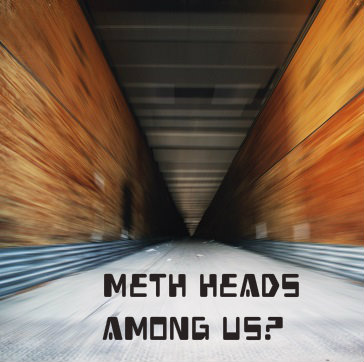 Each year, federal researchers from the Substance Abuse and Mental Health Services Administration use a project called the National Survey on Drug Use and Health to estimate the overall prevalence of methamphetamine use among American teenagers and adults. Figures released in late 2013 for the 2012 version of this survey indicate that 0.2 percent of the total population age 12 or older used the drug in an average or representative month. In raw numbers, this equates to about 440,000 people. In addition, approximately 0.4 percent of the teen and adult population used methamphetamine at some point during the entire survey year. This percentage equates to roughly 1.2 million people. Another project funded by the National Institute on Drug Abuse, called Monitoring the Future, tracks methamphetamine use among all 8th, 10th and 12th graders. All told, about 1 percent of students enrolled in these three grades used the drug at least one time in 2012.
Each year, federal researchers from the Substance Abuse and Mental Health Services Administration use a project called the National Survey on Drug Use and Health to estimate the overall prevalence of methamphetamine use among American teenagers and adults. Figures released in late 2013 for the 2012 version of this survey indicate that 0.2 percent of the total population age 12 or older used the drug in an average or representative month. In raw numbers, this equates to about 440,000 people. In addition, approximately 0.4 percent of the teen and adult population used methamphetamine at some point during the entire survey year. This percentage equates to roughly 1.2 million people. Another project funded by the National Institute on Drug Abuse, called Monitoring the Future, tracks methamphetamine use among all 8th, 10th and 12th graders. All told, about 1 percent of students enrolled in these three grades used the drug at least one time in 2012.
The Levels Of Chronic Meth Use
All chronic drug users repeatedly take a given substance over time. However, the actual frequency of intake between different chronic users can vary quite substantially. For instance, “low level” chronic users may regularly take a drug about four to 10 days a month. “Moderate- to high-level” chronic users may regularly take a drug about 11 to 20 days a month. The most extreme level of chronic use involves drug intake on a minimum of 21 days a month. Chronic drug use and the onset of diagnosable abuse and addiction typically go hand in hand. Compared to other habitual users, heavy chronic users commonly experience particularly intense forms of these problems. In the U.S., diagnosable cases of methamphetamine abuse and addiction fall under the heading of a larger condition called stimulant use disorder, which also encompasses abuse and addiction associated with the use of cocaine, amphetamine and other stimulant substances.
How Many Chronic Methamphetamine Users Are There?
In the report presented to the White House Office of National Drug Control Policy, the research team from the RAND Corporation used data gathered from several well-regarded sources to calculate how many people in the U.S. qualified as chronic methamphetamine users for each year between 2000 and 2010. Among others, these sources included that National Survey on Drug Use and Health and a periodically conducted project called the Arrestee Drug Abuse Monitoring Program, which tracked drug use rates in people who get arrested or otherwise come under the jurisdiction of the criminal justice system. In 2010, the most likely total number of chronic methamphetamine was about 1.6 million. The actual number of affected individuals may have been as low as 700,000 or as high as 2.7 million. For a number of reasons (including the relatively high rate of drug use among incarcerated individuals), the figures from the RAND report are substantially higher than the estimates produced by the National Survey on Drug Use and Health.
Roughly 600,000 of the people classified as chronic methamphetamine users in 2010 took the drug on four to 10 separate days per month. A slightly smaller number of chronic users (500,000) took the drug on 11 to 20 separate days per month. In addition, about 500,000 chronic methamphetamine users took the drug on 21 or more separate days per month.
The authors of the RAND Corporation report note that it’s quite difficult to accurately determine how many people in the U.S. have been involved in chronic methamphetamine use since the beginning of the 2000s. These difficulties stem largely from changes in the programs used to gather information on methamphetamine use. For example, methods employed by the National Survey on Drug Use and Health to calculate this use were changed significantly in 2007. In addition, there is only incomplete information available from the Arrestee Drug Abuse Monitoring Program (which also completely lost its federal funding in 2012).
Read About How Bath Salts Are 10 Times More Addictive Than Meth
As a rule, people affected by drug or alcohol addiction benefit from some sort of psychological or behavioral counseling that can help them successfully discontinue substance use and learn how to maintain substance abstinence over time. Some treatment programs feature individualized counseling sessions that only include a therapist and a single patient, while others feature group counseling sessions that include a therapist and multiple patients. In a study published in late 2013 in the Journal of Groups in Addiction & Recovery, researchers from two Canadian institutions compared the rate at which participants in individual counseling-oriented programs successfully complete addiction treatment to the rate at which participants in group counseling-oriented programs complete addiction treatment.
What Is Individual Counseling?
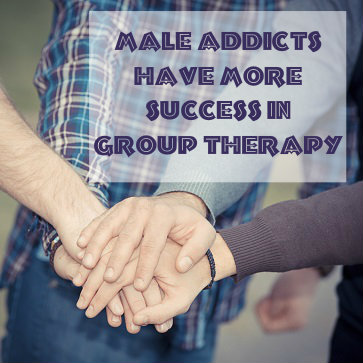 Individual counseling-based programs for addiction treatment rely on a therapeutic relationship between a therapist and a single patient/client to achieve the treatment objectives common to all forms of substance-related counseling. Typically, individual therapy takes place in sessions that last 30 minutes to an hour; the specific techniques used in each session depend upon the therapist and the guiding principles of the program in which he or she is involved. In most cases, a recovering addict participates in a single one-on-one session with his or her therapist per week. However, some programs make provisions for as many as three or more sessions per week or for sessions that only occur every 30 days or more. Because of its relatively high cost, individual therapy is used less often than group therapy as a treatment for substance abuse or substance addiction.
Individual counseling-based programs for addiction treatment rely on a therapeutic relationship between a therapist and a single patient/client to achieve the treatment objectives common to all forms of substance-related counseling. Typically, individual therapy takes place in sessions that last 30 minutes to an hour; the specific techniques used in each session depend upon the therapist and the guiding principles of the program in which he or she is involved. In most cases, a recovering addict participates in a single one-on-one session with his or her therapist per week. However, some programs make provisions for as many as three or more sessions per week or for sessions that only occur every 30 days or more. Because of its relatively high cost, individual therapy is used less often than group therapy as a treatment for substance abuse or substance addiction.
What Is Group Counseling?
Group counseling-based programs for addiction treatment rely on the natural human dynamic of group interaction to achieve typical goals such as regular attendance at counseling sessions, avoidance of a relapse back into substance use and the establishment of a solid foundation for ongoing substance abstinence. Depending on the program in question, group therapy can place a particular emphasis on any one of a number of recovery-related issues also commonly addressed in individual counseling-based programs. These issues include educating participants about various aspects of abuse and addiction, helping participants understand their underlying psychological/emotional motivations for substance use and helping participants establish mental and behavioral skills that can form the basis for a substance-free daily routine. Recovering addicts enrolled in group counseling-based programs may attend regular group sessions for as long as half a year to a year.
Comparing Completion Rates Of Both Types
In the study published in the Journal of Groups in Addiction & Recovery, researchers from Canada’s Western University and the Centre for Children & Families in the Justice System compared the rate of client/patient retention in individual therapy programs for substance abuse/addiction to the rate of client/patient retention in group therapy programs. They decided to undertake this work after finding out that the vast majority of voluntary enrollees at a Canadian agency for addiction treatment failed to complete their program participation.
The researchers concluded that the average recovering addict enrolled in a group therapy-based program is roughly 100 percent more likely to successfully complete his or her treatment than the average recovering addict enrolled in an individual therapy-based program. However, they also concluded that the majority of the difference in success rates between the two counseling approaches is gender-related. Broadly speaking, men participating in addiction recovery are more likely than women to drop out of any form of treatment. Still, men who participate in group therapy-based programs have a much higher treatment completion rate than men who participate in individual therapy-based programs. Conversely, the researchers found that women tend to complete individualized addiction therapy just as often as they complete group addiction therapy.
The conclusions made by the authors of the study published in the Journal of Groups in Addiction & Recovery indicate that doctors may need to take their patients’ gender into account when making recommendations for participation in either individual therapy or group therapy for addiction treatment. Further research will be needed to fully confirm the gender-related differences in the program completion rates among recovering addicts. While some programs rely only on individual therapy or group therapy, others combine the two approaches, largely because each approach typically produces some unique potential benefits for participants. This means that men in some programs who don’t respond well to individual therapy may still achieve their treatment objectives through regular attendance at any available group therapy sessions.
Read About How Drug Rehab Programs Rely On Science To Develop Effective Addiction Treatment Methods
Heroin use has exploded, a national survey on drug use reveals, growing from 373,000 yearly users in 2007 to an estimated 669,000 in 2012. This alarming substance abuse trend highlights the need for drug rehab and for strategies that reduce heroin’s harmful impact. One of those strategies is the distribution of a medication called naloxone, which reverses the effects of heroin overdose.
Naloxone, also known by the brand name Narcan, is a non-narcotic drug that works by binding certain opioid receptors in the brain. Approved by the FDA in 1971, naloxone reverses sedation and respiratory suppression, heroin’s primary life-threatening effects. It can be administered via an injection, usually given in the upper arm or thigh, or as a nasal spray. After it’s been administered, the medication takes effect as quickly as five minutes or less. Naloxone is considered safe and nontoxic, and it doesn’t produce a pleasurable high when used. This medication treats overdoses from heroin and other narcotic drugs, including codeine and oxycodone.
Administering naloxone is a harm-reduction technique, which means it’s not necessarily intended to stop heroin use. Instead, its purpose is to reduce the harmful and potentially lethal impact of a heroin overdose. While death is, of course, the most serious consequence of overdosing on opioids, brain injury from oxygen deprivation is a very serious concern as well.
Heroin users who overdose are at risk for long-term health issues, ranging from coordination problems to communication difficulties. In severe overdose cases, the result can be a vegetative state. Brain injury damages both the physical and emotional well-being of the addict, but it also negatively impacts the well-being of his or her loved ones. Treatment of an overdose-related brain injury is expensive as well. If the addict is unable to pay for needed medical care, the community will end up bearing the burden.
Who Can Give Naloxone?
Naloxone has been available for years to emergency medical technicians, ambulance crews and emergency room personnel. However, in recent years, perhaps fueled by the increase in heroin use, public health officials have pushed to make it more widely available to other first responders. For example, naloxone is now carried by police officers in several communities, including one in New Mexico and five in Massachusetts.
The challenge, however, is that heroin overdoses sometimes result in injury or death before first responders arrive or before the drug user reaches an emergency room. This has spurred some public health officials to advocate putting naloxone directly into the hands of addicts, their loved ones and concerned friends. In fact, in 2012, the American Medical Association (AMA) announced its support of offering naloxone through community-based programs. This would allow the bystanders of an overdose to administer the potentially life-saving medication. Some states have already moved to make naloxone more widely accessible. For example, Washington State allows drug users, family members and concerned friends to carry the medication.
What Are The Benefits Of Naloxone?
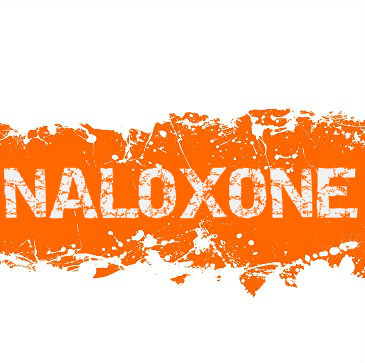 The potential benefits of naloxone are significant, and include the following:
The potential benefits of naloxone are significant, and include the following:
The drug saves lives. Research shows that using this medication reduces the number of deaths from opioid overdoses. A published study, which examined Massachusetts communities where first responders carried naloxone, reported 327 rescues from 2006 to 2009. The communities that had higher levels of training for naloxone use reported a nearly 50 percent reduction in opioid overdose fatalities. Those with lower levels of training had an approximate 30 percent lower death rate.
Naloxone is relatively inexpensive. A nasal spray naloxone kit costs in the ballpark of $25. This is extremely inexpensive when compared to the potential cost of brain damage or death due to a heroin-induced overdose.
It can be administered with minimal training. Naloxone, whether it is in injectable or nasal spray form, is easy to administer to someone who has overdosed on heroin or other narcotic drugs. Instructions are typically provided with the medication to help someone at the scene know when it’s time to give it and how to prepare the dose. For those who want to learn more about how to give naloxone properly, training is available through many community-based programs or from physicians familiar with the drug.
What Are The Downsides Of Naloxone?
Although the benefits of using Naloxone for opioid overdoses are impressive, use of the medication is not without its downsides. Negative aspects include the following:
The medication usually must be administered by someone else. By the time a heroin user needs naloxone, he or she is already likely unconscious. Naloxone is most effective when there’s a sober bystander able to watch for signs of overdose and administer the medication as quickly as possible. Unfortunately, many addicts use when they’re alone or with others who are also using. A sober bystander often isn’t anywhere in the vicinity. By the time someone does come onto the scene, it may be too late.
It doesn’t counteract the effect of other drugs. Naloxone only works for opioid overdoses, which means it has no impact when a person has ingested alcohol or substances like cocaine, benzodiazepines (such as Xanax or Valium), or methamphetamines.
Naloxone triggers withdrawal. Because the medication quickly reverses heroin’s effects, the user experiences withdrawal symptoms. These feelings are intense and uncomfortable; however, they’re not life-threatening. Perhaps the most dangerous aspect of withdrawal is that the heroin user will have a compelling urge to get high again.
The medication’s effects are temporary. Naloxone begins to wear off after 30 minutes, and most of it is gone after 90 minutes. However, a heroin high lasts from two hours in addicted users and up to six hours in new users. When the naloxone dose wears off, there may still be enough heroin in the body to reinitiate the high. If the original dose of heroin was large enough, respiratory suppression and sedation could start again. This would make an additional dose of naloxone necessary.
Bystanders may not call for help because they fear trouble with law enforcement. Loved ones or drug-using friends are sometimes highly reluctant to reach out to responders, even when those responders are armed with the potentially life-saving naloxone. This is often because they don’t want the person who’s using to get into legal trouble.
Some oppose its use. As with other harm-reduction strategies, such as needle exchange programs, there are always those who oppose its use. Critics charge that naloxone makes heroin users less likely to seek drug rehab because they no longer fear the consequences of an overdose.
Heroin abuse and addiction are serious community concerns. An overdose can lead to tragic and permanent consequences. While drug rehab treatment and abstinence are always the ultimate goals, it’s also important to address and reduce the harm done by drug abuse. Although it has its downsides, naloxone is a safe way to decrease the physical, emotional and financial impact of heroin overdose.
Read More About Successful Buprenorphine/Naloxone Treatment For Opioid Addiction
GHB is the common shorthand for gamma hydroxybutyrate, a drug of abuse identified as both a “club drug” and a “date rape” drug. People who use this drug repeatedly over time can develop a severe form of drug withdrawal that has the potential to produce fatal results. In a study published in February 2014 in the journal Drug and Alcohol Dependence, a team of Dutch researchers investigated the best options for treating individuals affected by GHB withdrawal. These researchers concluded that the appropriate option varies according to any given person’s level of involvement with GHB use.
What Is GHB?
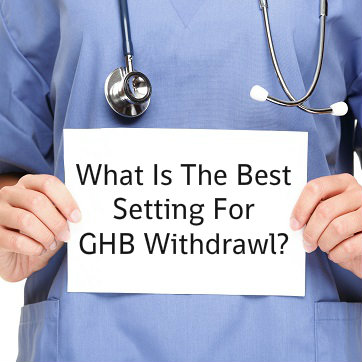 GHB occurs naturally inside the human brain, but only in small amounts. Trace amounts of the chemical also appear in certain types of wine and beer. A specific form of pharmaceutical GHB, called sodium oxybate (Xyrem), has legitimate medical use as a treatment for the sleep disorder narcolepsy. However, access to this medication is strictly controlled through federal law, and most people who use/abuse GHB recreationally rely on illegally produced batches made by clandestine drug manufacturers.
GHB occurs naturally inside the human brain, but only in small amounts. Trace amounts of the chemical also appear in certain types of wine and beer. A specific form of pharmaceutical GHB, called sodium oxybate (Xyrem), has legitimate medical use as a treatment for the sleep disorder narcolepsy. However, access to this medication is strictly controlled through federal law, and most people who use/abuse GHB recreationally rely on illegally produced batches made by clandestine drug manufacturers.
GHB alters normal brain and body function by reducing the rate of communication inside the central nervous system. The baseline effects of this reduction include both sedation and a form of euphoric intoxication. In addition, roughly two-thirds of all users of the drug lose consciousness. The euphoric and sedating effects of GHB largely account for its use as a club drug. The sedating and unconsciousness-producing effects of GHB largely account for its use as a date rape drug; its use as a date rape drug also stems from its ability to trigger amnesia. Other known potential effects of GHB use include hallucinations, nausea, vomiting, confusion, headaches and loss of body control. People who overdose on the drug can develop seizures, experience a dangerous decline in normal lung function, go into a coma or die.
Addiction To GHB And Withdrawal From It
When used repeatedly over time, GHB can trigger the long-term changes in brain function required to produce substance addiction. One of the classic signs of any form of drug or alcohol addiction is the onset of withdrawal symptoms when substance use ends or tapers off rapidly. In the case of GHB addiction, potential withdrawal symptoms include excessive sweat production, a highly anxious mental state, uncontrollable body tremors and sleeplessness. Some people develop severe forms of these symptoms that can lead to highly debilitating or even fatal changes in brain and body health.
What Is The Withdrawal Treatment Setting?
In the study published in Drug and Alcohol Dependence, researchers from three Dutch institutions sought to establish guidelines for the best way to address the effects of GHB withdrawal. They undertook this work because, despite the potentially severe nature of this withdrawal, some individuals may recover well in an outpatient setting rather than in a hospital. The researchers began the project by gathering case studies of patients going through GHB withdrawal from 40 professionals specializing in addiction medicine. These case studies were reviewed by another 15 addiction specialists who made recommendations for hospitalization or outpatient care for each patient under consideration. In the study’s third and final stage, five specialists with extensive experience in treating GHB withdrawal reviewed the rationale used for assigning any given patient to hospitalization or outpatient treatment.
All told, 20 patients going through GHB withdrawal were assessed and/or reviewed by the three groups of experts. The researchers concluded that two main factors account for the decision to either hospitalize a person going through withdrawal or recommend outpatient treatment: the amount of GHB used each day and the frequency of GHB intake. As a rule, patients who take 32 grams or more of the drug every day and use the drug at least every two hours require hospitalization when going through withdrawal. Patients who take smaller daily amounts of the drug and use the drug less than every two hours are potential candidates for outpatient withdrawal treatment.
The authors of the study published in Drug and Alcohol Dependence note that people with diagnosable psychiatric problems who go through GHB withdrawal may also require hospitalization rather than outpatient care. Conversely, people with strong support networks have an increased chance of receiving outpatient treatment when going through withdrawal. The authors believe that, overall, their work provides a solid framework that doctors can use when determining the best treatment setting for a person withdrawing from GHB use.
Not all people get involved in substance abuse for the same reason. Broadly speaking, some people are motivated primarily by the desire to increase their experience of pleasure, while others are motivated primarily by the desire to escape or avoid painful experiences. According to the results of a study published in March 2014 in the journal Addictive Behaviors, the underlying reasons for marijuana use have a significant impact on the results of treatments designed to address cannabis addiction. It appears that addicts motivated by pain avoidance have a harder time maintaining their recovery than their peers motivated by pleasure-seeking.
What Is Cannabis Use Disorder?
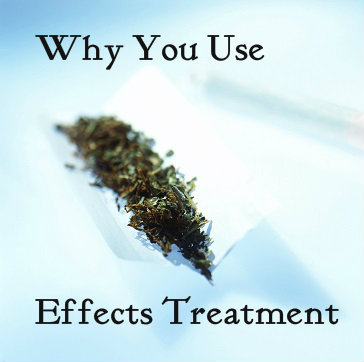 Marijuana or cannabis addiction is officially classified as part of a larger condition called cannabis use disorder. Some people affected by this disorder are not addicted to marijuana or other forms of cannabis, but still experience serious life impairment as a result of their drug use. Other affected individuals have undergone the long-term changes in brain chemistry that set the stage for marijuana/cannabis addiction and all other forms of substance addiction. Many people think that marijuana/cannabis addiction is a rare phenomenon. However, current evidence indicates that nine out of every 100 users of marijuana will develop symptoms that qualify them for an addiction diagnosis. Teenage marijuana users develop diagnosable addiction symptoms at close to twice this rate. In addition, addiction rates skyrocket among daily users of all ages; one-quarter to one-half of these individuals will eventually develop diagnosable symptoms.
Marijuana or cannabis addiction is officially classified as part of a larger condition called cannabis use disorder. Some people affected by this disorder are not addicted to marijuana or other forms of cannabis, but still experience serious life impairment as a result of their drug use. Other affected individuals have undergone the long-term changes in brain chemistry that set the stage for marijuana/cannabis addiction and all other forms of substance addiction. Many people think that marijuana/cannabis addiction is a rare phenomenon. However, current evidence indicates that nine out of every 100 users of marijuana will develop symptoms that qualify them for an addiction diagnosis. Teenage marijuana users develop diagnosable addiction symptoms at close to twice this rate. In addition, addiction rates skyrocket among daily users of all ages; one-quarter to one-half of these individuals will eventually develop diagnosable symptoms.
Emotional Motivations
Much of human behavior stems from the conscious or unconscious impact of various emotions and emotion-based motivations. Psychologists commonly refer to pleasure-seeking motivations as “positive” reasons for engaging in a behavior. Conversely, they commonly refer to pain-avoidance motivations as “negative” reasons. When it comes to substance intake, the terms “positive” and “negative” don’t mean that some people have “good” reasons for using drugs or alcohol while others have “bad” reasons. Instead, they simply mean that some people use drugs and alcohol because they believe that substance use will enhance their pleasurable experiences, while others use drugs or alcohol because they believe that substance use will help them avoid feeling bad or escape current bad feelings. Individuals with “positive” motivations for substance use can develop problems with abuse and/or addiction just like people with “negative” motivations. However, the two groups of substance users typically hold distinctly different mental/emotional points of view about themselves, their surroundings and their experiences.
Impact On Treatment Outcomes
In the study published in Addictive Behaviors, researchers from the University of Washington and Virginia Polytechnic Institute and State University looked at the treatment outcomes of marijuana addicts whose drug use stems from “negative” motivations. They conducted their work with information gathered from 87 adults who underwent treatment for issues related to a chemical reliance on marijuana. These participants provided information on the reasons they used marijuana in any given situation. In turn, for each participant, the researchers matched these motivations to three known markers of diminished mental well-being: lack of belief in the ability to control one’s behavior, use of ineffective coping strategies to deal with unpleasant emotions and an impairing state called psychological distress.
The researchers concluded that marijuana addicts who use the drug for “negative” reasons have increased chances of believing they can’t control their actions, using ineffective coping mechanisms to deal with their emotions and developing substantial amounts of psychological distress. The researchers also concluded that each of these adverse impacts develops independently of the others, which means that attempts to address one of the three issues will not reduce risks for the other two. In addition, the researchers found that, compared to marijuana addicts who don’t use the drug for “negative” reasons, marijuana addicts who do use the drug for these reasons have greater problems achieving or maintaining abstinence from marijuana intake after they complete their treatment programs.
The authors of the study published in Addictive Behaviors note that their new findings echo previous research efforts that indicate that “negative” reasons for drug or alcohol use produce more problems during recovery than “positive” reasons for drug or alcohol use. Current psychotherapeutic approaches for people affected by marijuana addiction typically focus on dealing with unpleasant or unwanted emotional states. The study’s authors believe that their work validates this approach and serves as an additional reason for continuing to focus on treating “negative” emotions in people who develop cannabis-related addiction issues.
Read About The Most Abused Substances To Self-Medicate Anxiety
24 Mar 2014
How Can You Forgive A Recovering Addict?
If you have suffered because of a loved one’s addiction, forgiveness may be difficult for you to give to that person. Many addicts in recovery apologize to those they have wronged. They do not expect or require forgiveness, but if you can find it in your heart to give it, forgiveness can be good for everyone. At a very minimum, forgiveness will allow you to reestablish a relationship. If you can’t forgive your loved one, you can no longer have a real relationship. Consider the benefits and then work toward real forgiveness.
What Does It Mean To Forgive An Addict?
 Before giving this gift of forgiveness, both to yourself and to the recovering addict, make sure you understand what it means. Forgiveness is a conscious decision. You must decide to give it and then live with it. Do not do it until you are ready.
Before giving this gift of forgiveness, both to yourself and to the recovering addict, make sure you understand what it means. Forgiveness is a conscious decision. You must decide to give it and then live with it. Do not do it until you are ready.
What forgiveness does not mean is forgetting what your loved one did to you. It does not mean that you are letting him off the hook or that there are no consequences because of his actions. It does not mean that you have to stop being angry. Forgiveness does not even mean that you have to reconcile with the person who hurt you.
How Can I Forgive?
Keep in mind that forgiveness is a journey. If you are just starting to think about forgiving a recovering addict, you may still be days, weeks, or months away from being ready to be in that state of mind. Take your time, but do think about forgiveness and what it would mean to you and your loved one. Make this process your own. Don’t wait for your loved one to apologize because it may never happen. Forgiveness is your choice.
Learn about addiction in an effort to get to the point at which you can forgive. Not being an addict yourself, it can be almost impossible to understand what your loved one went through. If you still struggle to find forgiveness in your heart, consider seeing a therapist or counselor. A professional can help you work through all the painful and confusing emotions you are feeling.
How Can Forgiveness Help?
Forgiveness is something you should largely do for yourself, but it can also help your loved one. He has been carrying around shame and guilt to an extent that you may never realize. Whether he has vocalized this to you yet or not, he is feeling bad. Your forgiveness would probably mean the world to him and studies have found that being forgiven is a powerful tool to help addicts stay sober.
By forgiving your loved one, you also give yourself an important gift. Research shows that people who forgive others often are less likely to be depressed, have higher self-esteem, have more friends and better marriages, have lower blood pressure, have a stronger immune system, and are less likely to have heart disease. Not only is forgiveness good for your mental health, it also impacts your physical wellbeing. Holding a grudge has a powerful effect on your psyche and your physical body.
You owe it to yourself at the least to find the room in your heart for forgiveness. Once you do it you will find that a weight has been lifted. You will feel lighter and freer without the burden of holding on to negative feelings. Take your time, but do try to get to that place. You won’t regret it.
Read More On How to Support A Recovering Addict After Everything
21 Mar 2014
Is Your Loved One Abusing Pain Pills?
Prescription painkillers are serious drugs that are effective and help many people, but they are also risky. These medications are opioids, which means that they produce a euphoric feeling in the user, or a high, and they are addictive. If someone you love has been prescribed a narcotic painkiller, be aware of the dangers and the possibility of abuse. Know how to read the signs that he is abusing the pills and be prepared to intervene before it is too late.
What Are Opioid Painkillers?
Opioid painkillers are controlled substances used to treat severe and chronic pain. An opioid is any drug that is derived from the compounds found in the opium poppy. Heroin, the highly addictive street drug, is an opioid. Prescription opioid painkillers include oxycodone, hydrocodone, morphine and hydromorphone. They are sold under various brand names. These drugs block pain signals, but they also cause a pleasant feeling, and if abused, create changes in the brain that often lead to dependence.
What Are The Signs Of Opioid Abuse?
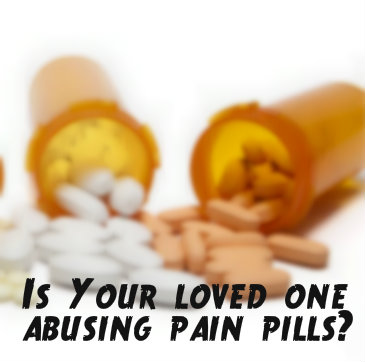 It is important to understand that there is a difference between abuse and addiction. Your loved one may be abusing painkillers if he is using them to get high or if he is taking more than he was directed by his doctor to take. Abuse is not addiction, but it can easily lead to that state. Being aware of the signs of abuse is important so that you can help him before he becomes addicted. If he is abusing his medications, chances are he will try to hide it from you. Here are some signs to watch for:
It is important to understand that there is a difference between abuse and addiction. Your loved one may be abusing painkillers if he is using them to get high or if he is taking more than he was directed by his doctor to take. Abuse is not addiction, but it can easily lead to that state. Being aware of the signs of abuse is important so that you can help him before he becomes addicted. If he is abusing his medications, chances are he will try to hide it from you. Here are some signs to watch for:
- Look for signs that your loved one is high on opioids. If he is taking them as directed he may experience a little bit of a high, but if he is abusing his pills the symptoms will be greater. Someone who is high on opioids will become drowsy and have slowed breathing and movements. He may also become anxious, have mood swings or become apathetic or depressed.
- Opioid abuse causes a lack of energy. If your loved one seems tired all the time, especially throughout the day, and skips out on activities he normally enjoys, he may be abusing his medications.
- Opioids also cause people to lose focus. Look for signs that your loved one’s attention span is changing. Maybe he can’t focus on his favorite television show. Maybe he is having problems at work because he loses focus and drifts.
- Look for physical signs. Opioids cause certain physical changes that you can watch for. Look for a lot of itching, flushing in the neck or face, extremely constricted pupils, a runny nose, a lot of yawning, nausea and vomiting and flu-like achiness.
- Watch for secretive behaviors. If your loved one is abusing his medications, he likely knows he is doing something wrong, and he will probably try to hide the behavior from you. Be aware of any behaviors that seem unusual or that indicate he may be hiding something from you.
- Be aware of mood swings or personality changes. Any kind of drug abuse can cause behavioral and personality changes. If he is acting strangely and you have no other explanation for his mood swings, drug abuse may be the culprit.
If your loved one has been prescribed opioids for pain, there is no reason to assume he will begin abusing them. However, many people have fallen into that trap without meaning to do so. Be aware of the signs of abuse and pay attention. You could be saving his life by intervening.
Read About Teens Abusing Painkillers
Methadone is an opioid medication sometimes used to treat people addicted to heroin or other powerful opioid drugs. Affected individuals commonly receive this medication on an ongoing basis rather than for a limited period of time. This pattern of usage can potentially create conflicts with participation in self-help support groups called 12-step groups, which typically place a high emphasis on complete drug and alcohol abstinence. In a study published in late 2013 in the Journal of Groups in Addiction & Recovery, researchers from three U.S. institutions sought to determine how many people receiving methadone also participate in a 12-step program.
What Is Methadone?
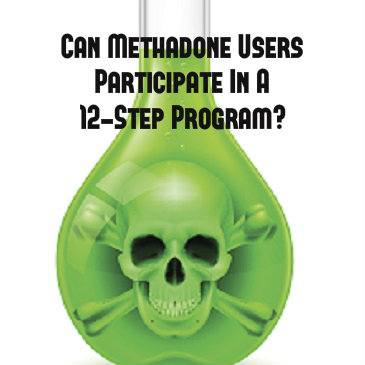 While methadone is an opioid substance, it has somewhat different properties than heroin or other opioid drugs of abuse. Those drugs are characterized by their ability to produce the rapid onset of a highly pleasurable state. Methadone, on the other hand, produces effects that build more slowly and result in a relatively low level of euphoric sensation. Doctors can exploit these properties and use methadone as a substitute for opioid drugs of abuse. Although an addict using methadone still has opioids in his or her bloodstream, he or she typically experiences a substantial reduction in the risk of drug-related harm. Although some addicted individuals receive only short-term methadone treatment, others participate in methadone maintenance treatment, an ongoing approach that uses methadone as an opioid drug replacement for extended periods of time.
While methadone is an opioid substance, it has somewhat different properties than heroin or other opioid drugs of abuse. Those drugs are characterized by their ability to produce the rapid onset of a highly pleasurable state. Methadone, on the other hand, produces effects that build more slowly and result in a relatively low level of euphoric sensation. Doctors can exploit these properties and use methadone as a substitute for opioid drugs of abuse. Although an addict using methadone still has opioids in his or her bloodstream, he or she typically experiences a substantial reduction in the risk of drug-related harm. Although some addicted individuals receive only short-term methadone treatment, others participate in methadone maintenance treatment, an ongoing approach that uses methadone as an opioid drug replacement for extended periods of time.
What Is A 12-Step Program?
Twelve-step programs get their name because they emphasize participation in a series of 12 consecutive “steps” as the key to overcoming a reliance on drugs or alcohol (or certain harmful behaviors). The specific steps undertaken vary from program to program; however, common features of most programs include admitting powerlessness over one’s harm-producing behavior, seeking some sort of spiritual assistance to cope with harm-producing behavior, assuming moral accountability for one’s harmful actions and making amends to people who suffer from one’s harmful actions.
As a rule, 12-step programs emphasize the need to stay substance-free. In order to help group members achieve this goal, they employ a sponsor system that relies on longer-term members to mentor shorter-term members and provide the encouragement needed to remain abstinent from substance use. Two of the most well known 12-step groups in the U.S. are Alcoholics Anonymous and Narcotics Anonymous.
How Many Methadone Users Participate In A 12-Step Program?
In the study published in the Journal of Groups in Addiction & Recovery, researchers from the Institute for Behavior and Health, Chestnut Health Systems and Partners in Drug Abuse Rehabilitation and Counseling investigated the degree of overlap between participation in methadone maintenance treatment and participation in a 12-step program. They conducted this investigation with the help of 322 adults currently participating in methadone programs. These adults were asked to submit information on their involvement in Alcoholics Anonymous and Narcotics Anonymous during the year prior to the start of the study. The researchers also asked them to detail their level of adherence to these 12-step groups’ program requirements.
The researchers found that fully two-thirds of the adults participating in methadone maintenance treatment also had a history of recent involvement with Alcoholics Anonymous, Narcotics Anonymous or both 12-step groups. Seventy-two percent of these individuals reported receiving important benefits from their involvement in Alcoholics Anonymous, while 77 percent reported receiving benefits from their involvement in Narcotics Anonymous.
Does A 12-Step Program Work For Methadone Users? And Why Are They Hiding Their Methadone Use?
However, the researchers concluded that, compared with 12-step members not using methadone, the methadone patients had a substantially smaller overall level of program involvement. For example, only half of the methadone-using members regularly attended meetings with a single group of 12-step practitioners. Only a quarter of the methadone-using members worked with a sponsor, and only 13 percent of these members ended up acting as sponsors for others. In addition, only 21 percent of the methadone users vigorously pursued the completion of the 12 steps that form the basis of 12-step programs.
The authors of the study published in the Journal of Groups in Addiction & Recovery found that roughly a quarter of all the methadone users who attended Alcoholics Anonymous or Narcotics Anonymous felt that their status as methadone recipients negatively affected their 12-step experiences. In addition, roughly one-third of all the methadone users actively hid their participation in methadone maintenance treatment from their 12-step peers. Altogether, the study’s findings indicate that methadone users who participate in 12-step programs experience widely varying outcomes from that participation.
Read About The Facts And Myths Of Methadone


